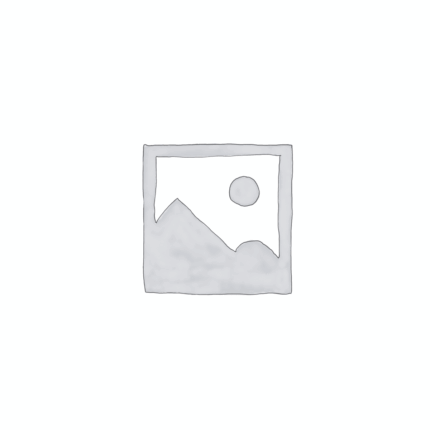Ammonium bicarbonate
Whatsapp Order
Ammonium bicarbonate is a white crystalline powder or granules with a slightly alkaline taste and a characteristic ammoniacal odor. It is a white solid that decomposes readily on heating, releasing ammonia, carbon dioxide, and water vapor. It is widely used in the food industry as a leavening agent, in chemical synthesis, and in various industrial applications. Its unique property of decomposing to release gases makes it valuable for baking and other processes where gas release is desired.
Description
Ammonium bicarbonate Uses
Primary Uses
Food Industry – Leavening Agent
- Commonly used as a leavening agent in baked goods such as cookies, crackers, and flatbreads where it helps produce a light, porous texture by releasing CO₂ gas upon heating.
- Preferred in recipes that require a quick release of gas without leaving residue, especially in traditional and artisanal baking.
- Used in some bakery products as an alternative to baking powder or baking soda.
- Approved as a food additive (E503ii) in many countries.
Chemical Industry – Reagent & Intermediate
- Utilized as a mild alkaline reagent in chemical synthesis and analytical chemistry.
- Acts as a source of ammonia and carbon dioxide in chemical reactions.
- Employed in the production of pharmaceuticals, fertilizers, and dyes.
Pharmaceuticals
- Used as a component in some effervescent powders and preparations, where the gas release aids dissolution and absorption.
- May act as a mild antacid in certain formulations.
Secondary Uses
Agriculture
- Occasionally used as a nitrogen fertilizer or soil amendment, providing ammonium ions and helping adjust soil pH.
- Less commonly applied compared to ammonium sulfate or nitrate.
Fire Extinguishing
- Used in some dry chemical fire extinguishers as a chemical that decomposes to release non-flammable gases.
Laboratory Uses
- Employed in analytical chemistry as a buffering agent or source of ammonium ions.
- Used in preparing volatile buffers for mass spectrometry and chromatography.
KEY ATTRIBUTES
1. Basic Identification Attributes
- Chemical Name (IUPAC): Ammonium bicarbonate
- Common/Trade Names: Ammonium bicarbonate, ammonium hydrogen carbonate
- CAS Number: 1066-33-7
- HS Code: 2836.20.00
- Molecular Formula: NH4HCO3
- Synonyms: Ammonium hydrogen carbonate, ammonium acid carbonate
2. Physical & Chemical Properties
- Physical State: White crystalline powder or granules
- Color & Odor: White, odor of ammonia when decomposing
- Melting Point: Decomposes at ~36–60°C (not a true melting point)
- Boiling Point: Decomposes before boiling
- Density: ~1.6 g/cm³
- Solubility: Highly soluble in water (~3.7 g/mL at 20°C), decomposes in hot water
- pH Level: Slightly alkaline (~8–9 in aqueous solution)
- Vapor Pressure: Low, but releases ammonia and CO₂ upon decomposition
- Flash Point: Non-flammable
- Stability: Unstable when heated or in moist environments
3. Safety & Hazard Attributes
- Hazard Class (GHS): Generally low hazard, but ammonia release can cause irritation
- NFPA Ratings: Health 2 (moderate hazard), Flammability 0, Reactivity 1 (unstable)
- Exposure Limits: No specific OSHA PEL, ammonia vapors exposure limits apply
- Reactivity: Decomposes readily on heating or in moist air
- Incompatible Materials: Strong acids, strong bases, oxidizing agents, moisture
4. Storage & Handling Attributes
- Storage Conditions: Store in a cool, dry place in airtight containers to prevent decomposition
- Container Type: Plastic or glass containers, tightly sealed
- Shelf Life: Typically 1–2 years if stored properly in dry conditions
- Special Handling: Avoid moisture and heat; handle in well-ventilated areas to avoid ammonia vapor buildup
5. Regulatory & Compliance Attributes
- Regulatory Status: Approved food additive (E503ii) in many regions
- Transportation: Not classified as hazardous but requires careful packaging to avoid moisture exposure
- Waste Disposal: Dispose according to local regulations; non-hazardous but avoid environmental contamination
6. Environmental & Health Impact
- Ecotoxicity: Low aquatic toxicity, but ammonia release can be harmful in large quantities
- Persistence: Decomposes readily in the environment
- Carcinogenicity: Not classified as carcinogenic
- Biodegradability: Biodegradable and breaks down into natural components
SAFETY HANDLING PRECAUTIONS
Safety Handling Precautions
- PPE: Wear gloves, safety goggles, and dust masks when handling the powder.
- Handling: Avoid inhalation of dust and ammonia vapors. Work in well-ventilated areas.
- Storage: Keep containers sealed and dry to prevent decomposition and ammonia release.
- Hygiene: Wash hands after use; avoid eating, drinking, or smoking during handling.
First Aid Measures
- Inhalation: Move affected person to fresh air immediately. If ammonia vapors cause irritation or breathing difficulty, seek medical attention.
- Skin Contact: Wash skin with soap and water. Seek medical advice if irritation develops.
- Eye Contact: Rinse eyes with plenty of water for at least 15 minutes. Seek medical care if irritation persists.
- Ingestion: Rinse mouth and drink plenty of water. Seek medical attention if large amounts are ingested.
Firefighting Measures
- Fire Hazards: Non-flammable but decomposes on heating releasing ammonia and carbon dioxide gases, which can be irritating.
- Extinguishing Media: Use water spray, dry chemical, foam, or CO₂ for surrounding fires.
- Special Precautions: Firefighters should use self-contained breathing apparatus (SCBA) due to ammonia vapors.
Related products
Acetic Acid Technical Grade
Acetic acid technical grade is a clear, corrosive liquid with a strong, sharp odor. It is primarily used in industrial and chemical applications rather than food or pharmaceutical products. With the chemical formula CH₃COOH, technical-grade acetic acid typically has a purity of around 99%, but it may contain small amounts of impurities that make it unsuitable for consumption or high-purity applications.
Acetone
Aminosidine Sulphate USP
Aminosidine Sulphate USP, also known as Paromomycin Sulphate, is an aminoglycoside antibiotic primarily used to treat parasitic infections and certain bacterial infections. It is a white or off-white crystalline powder, highly soluble in water, and typically administered orally or topically. It works by inhibiting protein synthesis in susceptible microorganisms, thereby exerting a bactericidal and antiparasitic effect. Aminosidine Sulphate is commonly employed in treating intestinal amoebiasis, leishmaniasis, and infections caused by gram-negative bacteria. Its inclusion in the United States Pharmacopeia (USP) signifies compliance with strict quality and purity standards for pharmaceutical use.
Ammonia solutions
Ammonia solutions, often referred to as aqueous ammonia or ammonium hydroxide, are clear, colorless liquids consisting of ammonia gas dissolved in water. The concentration of ammonia in these solutions typically ranges from 5% to 35% by weight. Ammonia solutions possess a pungent odor characteristic of ammonia gas and are alkaline with a pH typically between 11 and 12.5. This solution is widely used across various industries due to its excellent cleaning properties, reactivity, and role as a nitrogen source.
Ammonium Chloride
Ammonium chloride is a white crystalline salt with a salty, slightly acidic taste. It is highly soluble in water and is widely used in various industrial, agricultural, and pharmaceutical applications. It acts as a nitrogen source in fertilizers, a flux in metalworking, and an expectorant in medicine. Its versatility and relatively low toxicity make it an important compound in multiple sectors.
Ascorbic acid
Ascorbic Acid, commonly known as Vitamin C, is a water-soluble vitamin and potent antioxidant essential for collagen synthesis, immune function, and protection against oxidative stress. It is widely used as a nutritional supplement, food preservative, and additive to enhance shelf life and nutritional value. Naturally present in citrus fruits and various vegetables, ascorbic acid is also important in pharmaceutical, cosmetic, and animal feed industries due to its health benefits and preservative qualities.
Atropine Sulphate
Atropine Sulphate is a crystalline, water-soluble alkaloid salt derived from the belladonna plant (Atropa belladonna) and other Solanaceae family members. It is a tropane alkaloid with potent anticholinergic properties, widely used in medicine for its ability to block muscarinic acetylcholine receptors. Atropine Sulphate is employed in ophthalmology, emergency medicine, and anesthesia for its effects on the eyes, heart, and smooth muscles. It acts by inhibiting parasympathetic nerve impulses, resulting in pupil dilation, increased heart rate, and reduced gland secretions.
Betamethasone Sodium Phosphate BP
Betamethasone Sodium Phosphate BP is a synthetic corticosteroid ester in its water-soluble sodium salt form. It is widely used for its strong anti-inflammatory and immunosuppressive properties in medical and veterinary applications. It is typically formulated as an injectable or ophthalmic solution to manage acute or chronic inflammatory and autoimmune conditions, including severe allergic reactions, asthma, arthritis, and dermatological disorders. Its rapid onset of action and high potency make it valuable in emergency and systemic therapy.


 Pesticides (Herbicides, Insecticides, Fungicides)
Pesticides (Herbicides, Insecticides, Fungicides) Animal Feed Additives
Animal Feed Additives Biostimulants
Biostimulants Plant Growth Regulators
Plant Growth Regulators Fertilizers
Fertilizers Soil Conditioners
Soil Conditioners
 Decoratives
Decoratives Dough Conditioners
Dough Conditioners Fat Replacers
Fat Replacers Flour Treatments
Flour Treatments Leavening Agents
Leavening Agents Preservatives(baking)
Preservatives(baking)
 Bleaching Agents
Bleaching Agents Builders
Builders Enzymes
Enzymes Fragrances
Fragrances Surfactants(cleaning)
Surfactants(cleaning) Solvents (cleaning)
Solvents (cleaning)
 Admixtures
Admixtures Anti-Corrosion Coatings
Anti-Corrosion Coatings Concrete Repair Chemicals
Concrete Repair Chemicals Curing Compounds
Curing Compounds Sealants and Adhesives
Sealants and Adhesives Waterproofing Agents
Waterproofing Agents
 Antioxidants(cosmetic)
Antioxidants(cosmetic) Emollients
Emollients Fragrances and Essential Oils
Fragrances and Essential Oils Humectants
Humectants Surfactants(cosmetic)
Surfactants(cosmetic) Thickeners
Thickeners UV Filters
UV Filters Preservatives (cosmetic)
Preservatives (cosmetic)
 Bio-based Solvents
Bio-based Solvents Biodegradable Surfactants
Biodegradable Surfactants Carbon Capture Chemicals
Carbon Capture Chemicals Renewable Polymers
Renewable Polymers Wastewater Treatment Chemicals
Wastewater Treatment Chemicals
 Acidulants
Acidulants Antioxidants
Antioxidants Colorants(food)
Colorants(food) Emulsifiers
Emulsifiers Flavor Enhancers
Flavor Enhancers Nutraceutical Ingredients (food)
Nutraceutical Ingredients (food) Nutrient Supplements
Nutrient Supplements Preservatives(food)
Preservatives(food) Sweeteners
Sweeteners
 Dried Herbs
Dried Herbs Fresh Herbs
Fresh Herbs Ground Spices
Ground Spices Spice Blends
Spice Blends Whole Spices
Whole Spices
 Analytical Reagents
Analytical Reagents Biochemical Reagents
Biochemical Reagents Chromatography Chemicals
Chromatography Chemicals Inorganic and Organic Standards
Inorganic and Organic Standards Laboratory Safety Chemicals
Laboratory Safety Chemicals Microbiology and Cell Culture Reagents
Microbiology and Cell Culture Reagents Molecular Biology Reagents
Molecular Biology Reagents Solvents(lab)
Solvents(lab) Specialty Laboratory Chemicals
Specialty Laboratory Chemicals Spectroscopy Reagents
Spectroscopy Reagents
 Collectors
Collectors Dust Suppressants
Dust Suppressants Explosives and Blasting Agents
Explosives and Blasting Agents Flocculants and Coagulants
Flocculants and Coagulants Frothers
Frothers Leaching Agents
Leaching Agents PH Modifiers
PH Modifiers Precious Metal Extraction Agents
Precious Metal Extraction Agents
 Catalysts
Catalysts Corrosion Inhibitors
Corrosion Inhibitors Demulsifiers
Demulsifiers Drilling Fluids
Drilling Fluids Hydraulic Fracturing Fluids
Hydraulic Fracturing Fluids Scale Inhibitors(oil)
Scale Inhibitors(oil) Surfactants(oil)
Surfactants(oil)
 Active Pharmaceutical Ingredients (APIs)
Active Pharmaceutical Ingredients (APIs) Analgesics and Antipyretics
Analgesics and Antipyretics Antibiotics
Antibiotics Antiseptics and Disinfectants
Antiseptics and Disinfectants Excipients
Excipients Nutraceutical Ingredients (Pharmaceutical)
Nutraceutical Ingredients (Pharmaceutical) Solvents(pharmaceutical)
Solvents(pharmaceutical) Vaccine Adjuvants
Vaccine Adjuvants
 Antioxidants(plastic)
Antioxidants(plastic) Colorants (Pigments, Dyes)
Colorants (Pigments, Dyes) Fillers and Reinforcements
Fillers and Reinforcements Flame Retardants
Flame Retardants Monomers
Monomers Plasticizers
Plasticizers Polymerization Initiators
Polymerization Initiators Stabilizers (UV, Heat)
Stabilizers (UV, Heat)
 Accelerators and Retarders
Accelerators and Retarders Adhesion Promoters
Adhesion Promoters Antidegradants (Antioxidants, Antiozonants)
Antidegradants (Antioxidants, Antiozonants) Blowing Agents (for foam rubber)
Blowing Agents (for foam rubber) Plasticizers and Softeners
Plasticizers and Softeners Reinforcing Agents (Carbon Black, Silica)
Reinforcing Agents (Carbon Black, Silica) Vulcanizing Agents (e.g., Sulfur, Peroxides)
Vulcanizing Agents (e.g., Sulfur, Peroxides)
 Analytical Reagents
Analytical Reagents Automotive chemicals
Automotive chemicals Electronic Chemicals
Electronic Chemicals Lubricants
Lubricants Photographic Chemicals
Photographic Chemicals Pyrotechnic Chemicals
Pyrotechnic Chemicals Refrigerants
Refrigerants Sealants and Adhesives
Sealants and Adhesives
 Antistatic Agents
Antistatic Agents Bleaching Agents
Bleaching Agents Dyes and Pigments
Dyes and Pigments Finishing Agents
Finishing Agents Flame Retardants
Flame Retardants Softening Agents
Softening Agents
 Antifoaming Agents
Antifoaming Agents Chelating Agents
Chelating Agents Coagulants and Flocculants
Coagulants and Flocculants Corrosion Inhibitors
Corrosion Inhibitors Disinfectants and Biocides
Disinfectants and Biocides Oxidizing Agents
Oxidizing Agents pH Adjusters (water)
pH Adjusters (water) Scale Inhibitors( water)
Scale Inhibitors( water)















